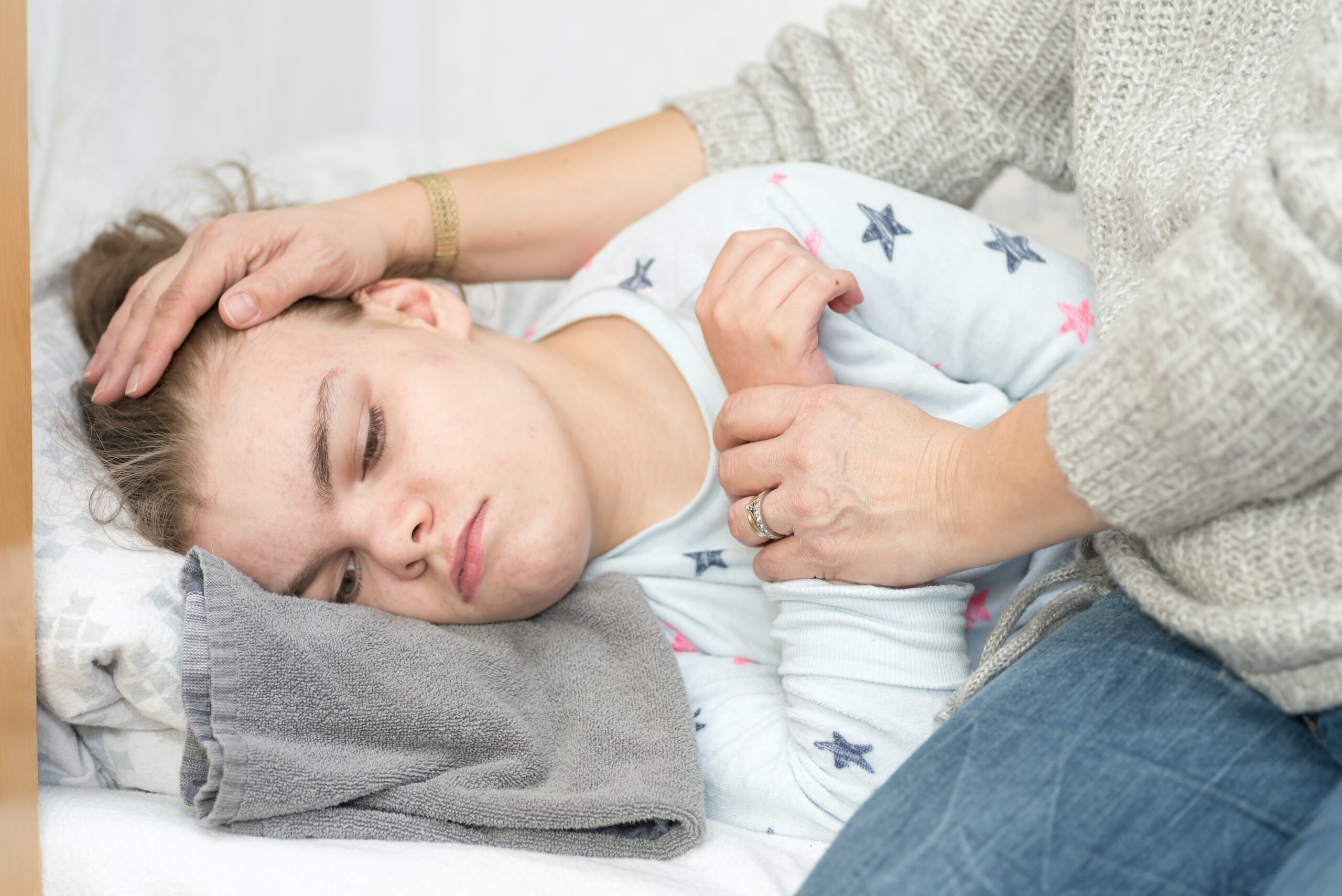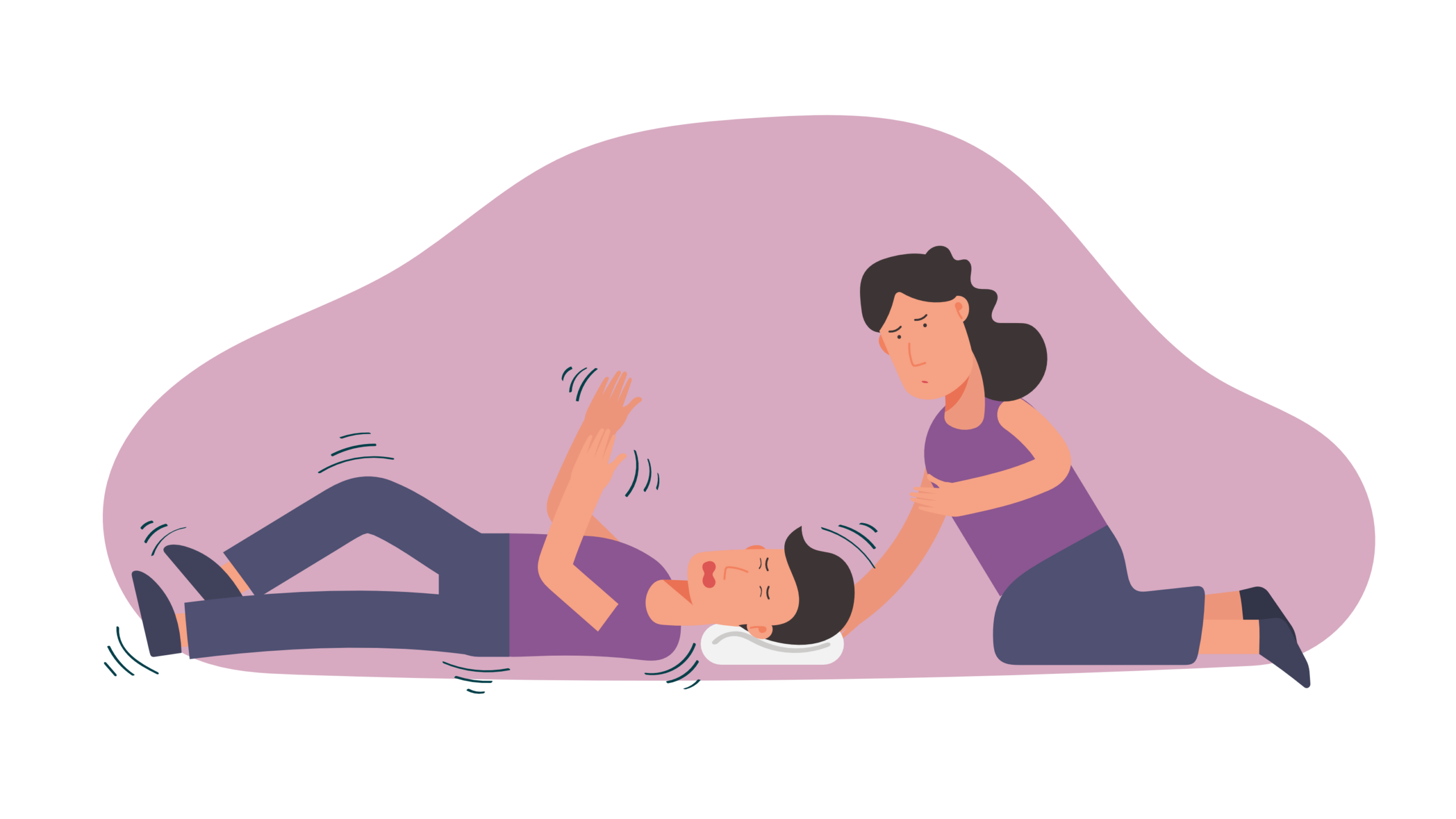Seizures
Seizures
Definition of Seizures
Our brain is composed of billions of neurons or nerve cells that conduct electrical signals. A seizure is a manifestation of abnormal electrical conduction of these electric signals. These can result in changes in awareness, behavior, or abnormal movements and can last for a few seconds to several minutes or longer.
If epileptic seizures recur, the medical condition is known as a seizure disorder or epilepsy.
Not everyone with seizures has epilepsy. Nonepileptic seizures can be elicited by other conditions such as low blood sugar, a fainting spell, or anxiety attacks.

Child Experiencing a Seizure
Seizure Types
Tonic-clonic. A type of seizure where a person may stiffen and manifest jerking movements of a part of or the whole body. This type of seizure can cause the person to bite their tongue or urinate involuntarily.
Absence seizure. Sometimes, a person just presents with a blank stare for a few seconds or develops subtle chewing motions or lip-smacking. These seizures are very difficult to notice sometimes.
Other types of seizures are less profound than convulsions and may present as mild shaking movements of an arm or part of the face.
Auras. There are times when a person can feel certain sensations that anticipate convulsive seizures. This is called an aura. It is a subjective feeling that the patient learns to recognize in advance of a seizure. It could be stomach discomfort, a feeling of fear, the appearance of lights or colors in the vision, or an unusual smell or sound that indicates a seizure is imminent.
Seizure Triggers
The following are some examples of triggers that cause seizures:
- Strong emotions
- Loud music
- Flashing lights
- Intense exercise
Other less common seizure triggers include sleep deprivation, menstruation, and stress.
Postictal State
The postictal state is the condition of the body after a seizure. In the postictal state:
- The person may not remember having a seizure.
- They may have confusion, tiredness, and develop a throbbing headache.
- There may be a feeling of weakness in an arm, hand, or leg.
- Some people have difficulty speaking or experience temporary vision loss.
The postictal state can last for several minutes to a few hours, but there are reports of it lasting up to a few days.
Causes of Seizures
Epileptic Seizures
Epileptic seizures can be caused by certain types of brain injury, such as trauma, stroke, infection, or tumor. Some patients have epileptic seizures that are inherited. However, most causes of epileptic seizures are unknown.
Provoked Seizures
Provoked seizures can be caused by taking certain drugs, alcohol withdrawal, and metabolic imbalances such as hypoglycemia. These types of seizures do not occur again once the offending agent is removed or the metabolic problem is corrected.
Nonepileptic Seizure
These are seizures not caused by abnormal brain activity. They are caused by things like a high fever, a psychological condition, a fainting spell, or a neuromuscular disorder.
First Aid Interventions for Seizures
Often seizures do not need first aid treatment. But patients that present with a convulsion or tonic-clonic seizure do need some first aid intervention. A tonic-clonic seizure will usually last for about 3–5 minutes.
When a person is having a seizure, instructions for responders are as follows:
- Do not hold down or restrain the person.
- Protect the person, especially their head, by providing a cushion.
- Clear the area and have bystanders step away from the individual.
- DO NOT PUT ANYTHING IN THE PERSON’S MOUTH.
- If the person begins vomiting or has increased secretions, place them on their side to prevent choking or aspiration of vomitus or secretions.
- Monitor the patient’s breathing and make sure that the airway is open.
- Once the seizure has stopped, reassurance should be given.
- If still unresponsive, leave the patient on their side to prevent choking from his secretions.
- Check the patient’s mouth for any signs of bleeding, especially from the tongue.

Rescuer uses a cushion to protect the seizure patient’s head
Responders should activate the emergency response system (usually 9-1-1) if:
- The person is a child.
- The seizure has lasted for more than 5 minutes.
- This is a first seizure.
- The person does not wake up following a seizure.
- The seizure occurs more than once.
- The person is in cardiopulmonary arrest. In this instance, high-quality CPR should be initiated.